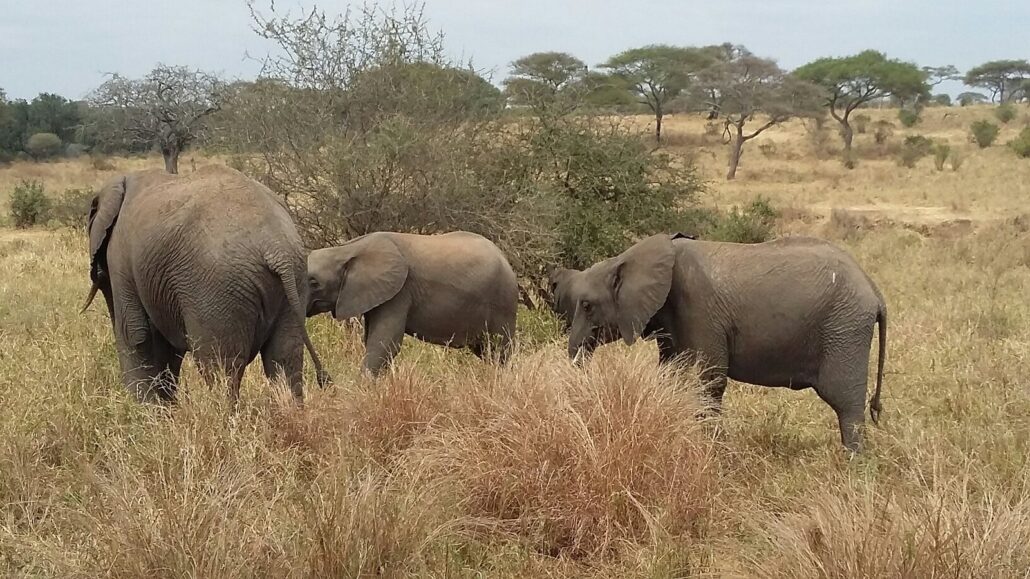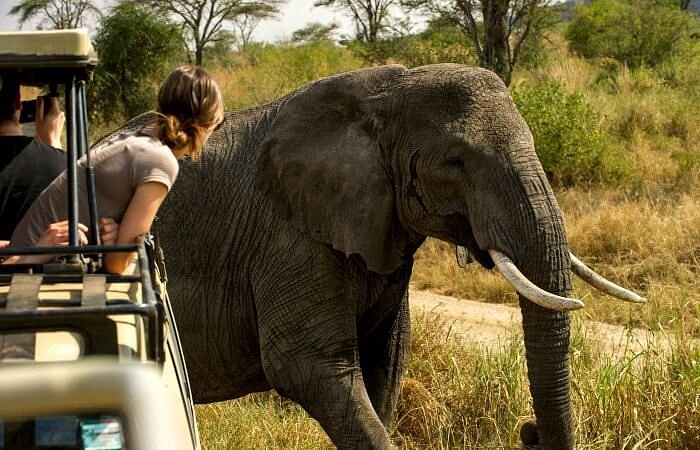Tarangire National Park Tanzania
Tarangire National Park, nestled in northern Tanzania, is renowned for its stunning landscapes, diverse wildlife, and iconic baobab trees. As one of the country’s lesser-known gems, Tarangire offers a unique and immersive safari experience away from the crowds.

This comprehensive guide provides detailed insights into Tarangire National Park, covering its location, accessibility, optimal visiting times, main attractions, and activities to engage in during your visit.
Location Of Tarangire National Park
Tarangire National Park is situated in the Manyara Region of northern Tanzania, approximately 118 kilometers (73 miles) southwest of Arusha. The park covers an area of approximately 2,850 square kilometers (1,100 square miles) and is part of the larger Tarangire-Manyara ecosystem.
How to Get To Tarangire National Park
By Air
The nearest major airport is Kilimanjaro International Airport (JRO), located near Arusha. From there, you can take a domestic flight to Kuro Airstrip, which is located within Tarangire National Park. Several airlines operate flights between Kilimanjaro and Kuro Airstrip, offering convenient access to the park.
By Road

Tarangire National Park is accessible by road from Arusha, which is the gateway to many northern Tanzanian safari destinations. The journey typically takes around 2-3 hours, depending on road conditions and traffic. Many tour operators offer guided safaris that include transportation to and from the park.
Best Time to Visit Tarangire National Park
Dry Season (June to October)
The dry season, from June to October, is considered the best time to visit Tarangire National Park. During this period, vegetation is sparse, and animals congregate around the Tarangire River, providing excellent opportunities for wildlife viewing. The weather is generally cool and dry, with clear skies ideal for photography and outdoor activities.
Wet Season (November to May)
The wet season, from November to May, brings occasional rain showers and lush green landscapes to Tarangire National Park. While wildlife disperses across the park during this time, bird watching enthusiasts will delight in the presence of migratory bird species. The wet season also offers lower visitor numbers and discounted rates for accommodations.
Top Sights/Attractions In Tarangire National Park
Wildlife Viewing
Tarangire National Park is renowned for its diverse wildlife population, including large herds of elephants, wildebeests, zebras, giraffes, and various antelope species. The park’s signature baobab trees provide a dramatic backdrop for wildlife photography and game viewing.
Highlights
- Elephant Migration: Tarangire is famous for hosting one of the largest elephant populations in Tanzania, with herds migrating through the park during the dry season in search of water.
- Predator Sightings: Lions, leopards, and cheetahs are among the park’s predators, often spotted lounging in the shade or hunting on the savannah plains.
- Bird Watching: Tarangire is a bird watcher’s paradise, with over 550 bird species recorded within the park, including colorful bee-eaters, hornbills, and the iconic lilac-breasted roller.
Tarangire River
The Tarangire River is the lifeline of the park, providing a vital water source for wildlife throughout the year. During the dry season, animals gather along the riverbanks, offering prime opportunities for game viewing and bird watching.
Highlights Of
- Boat Safaris: Guided boat safaris along the Tarangire River offer a unique perspective of the park’s wildlife, including crocodiles, hippos, and numerous bird species.
- Picnic Sites: Several picnic sites along the riverbanks provide scenic spots for visitors to enjoy a leisurely meal while observing wildlife in their natural habitat.
Baobab Trees
Tarangire National Park is dotted with majestic baobab trees, known for their iconic silhouettes and cultural significance. These ancient trees serve as landmarks and provide shade for wildlife, creating picturesque landscapes throughout the park.
Highlights
- Sunset Views: The baobab-studded plains of Tarangire offer spectacular sunset vistas, with the silhouettes of these iconic trees against the colorful evening sky.
- Photography Opportunities: Baobab trees make for striking subjects in wildlife photography, particularly when combined with herds of elephants or other animals in the foreground.
Best Activities/Things to Do In Tarangire National Park
Game Drives
Game drives are the primary activity in Tarangire National Park, offering visitors the opportunity to explore the park’s diverse habitats and encounter its resident wildlife. Guided game drives are available, led by knowledgeable safari guides who provide insights into the park’s ecology and animal behavior.
Walking Safaris
Guided walking safaris offer a more intimate and immersive wildlife experience, allowing visitors to explore the park on foot accompanied by armed rangers and expert guides. Walking safaris provide opportunities to track animals, learn about the park’s flora and fauna, and appreciate its smaller wonders up close.
Bird Watching
With its rich avian diversity, Tarangire National Park is a paradise for bird watchers. Guided birding excursions led by experienced ornithologists allow visitors to spot a wide range of bird species, from colorful songbirds to majestic raptors.
Cultural Encounters
Visits to local Maasai communities near Tarangire National Park provide cultural insights into the traditional lifestyle and customs of Tanzania’s indigenous peoples. Cultural experiences may include guided village tours, traditional dance performances, and opportunities to purchase handmade crafts and souvenirs directly from local artisans.
Accommodations In Tarangire National Park Tanzania
Luxury Lodges
- Tarangire Treetops: Located in a private game reserve adjacent to Tarangire National Park, Tarangire Treetops offers luxurious treehouse-style accommodations and exclusive safari experiences.
- Sanctuary Swala Camp: Situated in a secluded area of the park, Sanctuary Swala Camp features elegant tented suites with panoramic views of the surrounding wilderness.
Mid-Range Camps
- Tarangire Safari Lodge: Perched on a ridge overlooking the Tarangire River, Tarangire Safari Lodge offers comfortable accommodations and sweeping views of the park.
- Oliver’s Camp: Nestled in the heart of Tarangire National Park, Oliver’s Camp provides rustic yet elegant tented accommodations and authentic safari experiences.
Budget Campsites
- Public Campsites: Tarangire National Park offers several public campsites with basic facilities for budget-conscious travelers seeking a more authentic bush camping experience.
Tips for a Great Experience
Plan Ahead
- Book Accommodations Early: Tarangire National Park is popular among safari enthusiasts, so it’s advisable to book accommodations well in advance, especially during peak seasons.
- Pack Essentials: Remember to bring sunscreen, insect repellent, a hat, and comfortable clothing suitable for safari excursions.
Respect Wildlife and Environment
- Observe Wildlife Safely: Always maintain a safe distance from wildlife and refrain from approaching animals too closely or disturbing their natural behavior.
- Leave No Trace: Practice responsible tourism by disposing of waste properly and minimizing your impact on the environment.
Follow Park Regulations
- Follow Park Rules: Familiarize yourself with park regulations and adhere to guidelines provided by park authorities and safari guides for a safe and enjoyable experience.